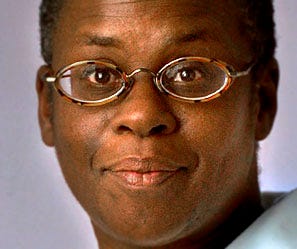Peoria community center has been central to the Black experience for a century

In October 1922, the Colored Women’s Aid Club opened the Negro Community Center in a house at 108 S. Globe St. It’s hard to think of a single moment that foretells the Black experience in Peoria as much as that moment 100 years ago this month.
“The center is the only meeting place we have outside of the churches,” Nora Houston, the center’s long-time director, said in 1924. There were only three Black churches in Peoria at the time.
Over the next 20 years, the center grew in lockstep with Peoria’s Black population. Club members paid $4,500 cash to buy a larger house at 1010 Sanford and moved the center there in 1937. By 1939, they gave control to an interracial community-wide board that, after a community-wide fundraising drive, moved the center to its third and current location and changed its name. George Washington Carver Community Center was dedicated in 1944 just as the Great Migration from the south went into high gear.
The new site, a remodeled telephone company warehouse, was chosen specifically for its location, the geographic center of an area where 60-75 percent of the Black community was concentrated. Street names changed, Carver’s address went from the corner of Third and Spencer to the corner of Third and Sheridan, which is now the corner of Percy Baker Jr. Ave. and Richard Pryor Place. Carver was the heart of a neighborhood.
One center on one corner nourished talent and opportunity that took Peoria’s name around the world.
Richard Pryor won five Grammys for his iconic comedy albums but only one Emmy (for writing on a 1974 Lily Tomlin special.) He gave it to Juliette Whittaker, Carver’s drama director who gave him his first chance to hone his skills on a public stage.
Carla McGee, a member of the unbeaten 1996 U.S. Olympics women’s basketball team, the “Dream Team,” donated her gold medal to display at Carver, hoping it would inspire young people as Carver had inspired her.
A trailblazer in women’s basketball, Charlotte Lewis, helped the U.S. team win a silver medal in 1976 in the first-ever Olympic competition for women’s basketball. Carver’s program director for a decade before her death, she dreamed of becoming Carver’s executive director.
Henry Harper, Carver’s first director, hired people like Whittaker, the Rev. C.T. Vivian and Valeska Hinton. Vivian left Carver to join the Civil Rights Movement in the south. He took part in the Freedom Rides and was an aide to Martin Luther King Jr. He received the Presidential Medal of Freedom, the nation’s highest civilian honor in 2013. Hinton, known as the “mother of Peoria’s Civil Rights Movement,” became director the city’s first Human Relations Commission and a staff representative for the U.S. Commission on Civil Rights.
Legendary basketball coach Wayne McClain once called Carver "as important as City Hall.” Peoria Mayor Rita Ali calls another Carver director, Erma Davis, one of her most important mentors.
The list of everyday people who influenced or were influenced by Carver is also filled with local legends in education, sports, arts, business, law enforcement and politics, including many who became “Black firsts” in the city.
Retired Peoria Public Schools Superintendent Ken Hinton says he hated taking piano lessons at Carver as a child. He knew little about its powerful legacy until he left retirement in 2012 to help pull Carver from the brink of closing. With the help of dozens of volunteers, Hinton worked as Carver’s executive director almost five years — for free — guiding it through a $1.5 million renovation funded with tax-increment financing revenues. Current director Jacobie Proctor is continuing the work they started.
Carver is a landmark, a site of memory, whose legacy spans Peoria’s entire history. The Colored Women’s Aid Club began in 1899, when racial segregation was custom and law. Carver’s location is now a reminder of the landscape of segregation, redlining and what was lost through Urban Renewal. Yet, larger outside forces were the backdrop, not the focal point, at both Carver and the Negro Community Center.
The bottom line of so many current issues and debates hinges on how to build and/or maintain institutions that speak to the spirit the way so many say Carver still speaks to theirs. The Colored Women’s Aid Club left a blueprint and laid the foundation for a community center that outlasted them.
Guided by the motto “Lifting As We Climb,” they forged coalitions in and out of the Black community. They were an original partner of what is now the Heart of Illinois United Way and a member of the Peoria Women’s Civic Federation. They were leaders in the Black Women’s Club Movement, which in Illinois during the early 1900s, was the largest group advocating for the rights and welfare of Black residents.
Black club women built and supported Black organizations throughout Illinois, from orphanages and old folk homes to settlement houses and community centers. Carver is one of the last institutions in the state, if not the only, with direct links to that movement.
If members of the Colored Women’s Aid Club were around today, they would say what their actions always said. Support Carver, support Black institutions.